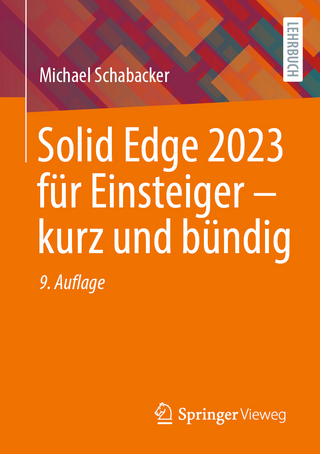
Modal Analysis and Testing
Kluwer Academic Publishers (Verlag)
978-0-7923-5893-0 (ISBN)
- Keine Verlagsinformationen verfügbar
- Artikel merken
Modal analysis is one of the most powerful tools available to the engineer for the dynamic analysis of structures. Development has been rapid and spans the identification and evaluation of vibration phenomena, the validation, correction and updating of analytical models and the assessment of structural integrity. The texts assembled here form a coheren t work. After a first chapter on the fundamentals of modal analysis, the reader is introduced to signal processing and the basic rules of exchange and analysis of dynamic information. The derivation of theoretical models for modal analysis is then addressed, followed by three chapters on the different approaches to the derivation of models based in the identification of experimental data: time domain, frequency domain and pseudo-testing. This leads to the discussion of updating analytical models and to model quality assessment techniques. Further topics treated include damage detection and evaluation, structural modification, damping modelling, and the normalisation of complex modes.
Less well-known topics are also included: active control of structures, acoustic modal analysis and neural networks for modal analysis, advanced optimization methods of model updating, modal analysis for rotating machinery, and nonlinearity in modal analysis.
Preface. List of Sponsors and Participants. An Overview of the Fundamentals of Modal Analysis; J.M. Montalvaao e Silva. Introduction to Signal Processing; J.K. Hammond. Rules for the Exchange and Analysis of Dynamic Information; P.S. Varoto, K.G. McConnell. Theoretical Models for Modal Analysis; D.J. Inman. Fundamentals of Time Domain Modal Identification; S.R. Ibrahim. Modal Identification Methods in the Frequency Domain; N.M.M. Maia. Parametric Identification Based on Pseudo-Tests; G. Lallemant, S. Cogan. Updating of Analytical Models -- Basic Procedures and Extensions; M. Link. Model Quality Assessment and Model Updating; M. Link, G. Hanke. Damage Detection and Evaluation I; J. He. Damage Detection and Evaluation II; C.R. Farrar, S.W. Doebling. Structural Modification; J. He. Damping: An Introduction to Viscoelastic Models; D.J. Inman, C.H. Park. Description of Damping and Applications; L. Gaul. Existence and Normalization of Complex Modes for Post Experimental Use in Modal Analysis; S.R. Ibrahim. Active Control of Structures; L. Gaul, U. Stobener. Acoustic Modal Analysis; P. Sas, F. Augusztinovicz. Neural Networks for Modal Analysis; N.A.J. Lieven. Advanced Optimisation Methods for Model Updating; N.A.J. Lieven. Modal Analysis for Rotating Machinery; D.J. Ewins. Nonlinearity in Modal Analysis; G.R. Tomlinson.
| Reihe/Serie | NATO Science Series: E: Applied Sciences ; v. 363 |
|---|---|
| Zusatzinfo | Illustrations |
| Sprache | englisch |
| Themenwelt | Technik ► Maschinenbau |
| ISBN-10 | 0-7923-5893-7 / 0792358937 |
| ISBN-13 | 978-0-7923-5893-0 / 9780792358930 |
| Zustand | Neuware |
| Haben Sie eine Frage zum Produkt? |
aus dem Bereich


